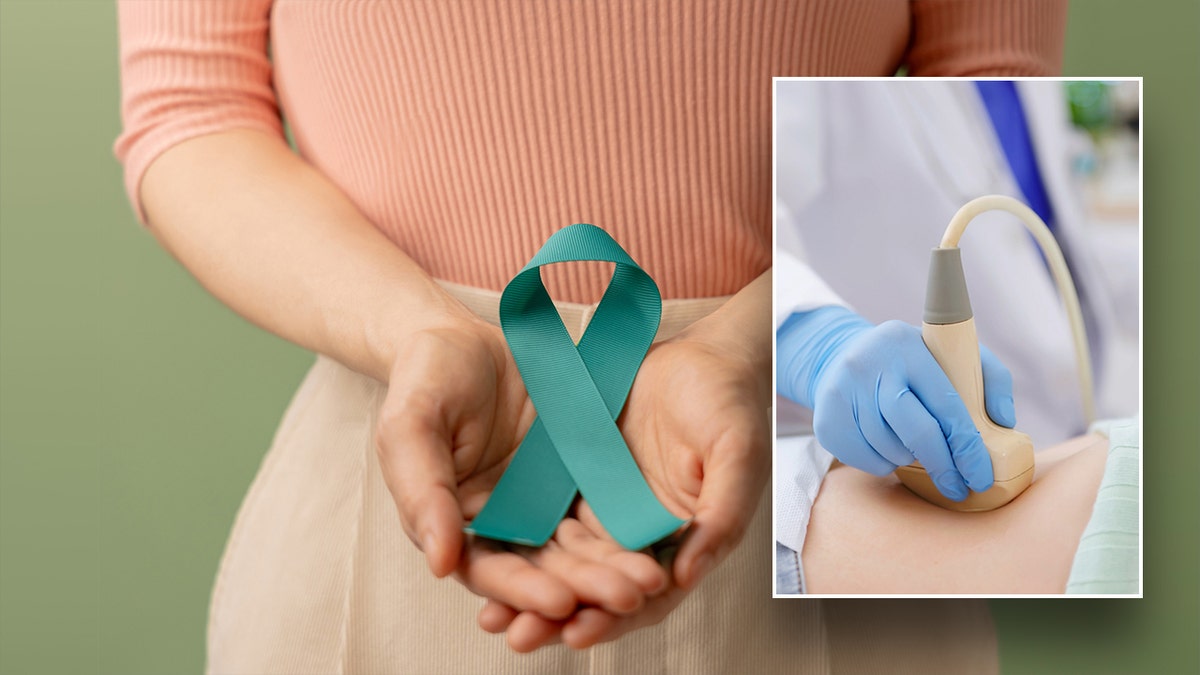All about ovarian cancer and how to reduce your risk
Ovarian cancer is a type of cancer that impacts the female reproductive system.
The risk of developing ovarian cancer in a woman’s lifetime is 1 in 87, according to the American Cancer Society (ACS).
It’s most commonly seen in older women, particularly over age 63.
‘DOES SMARTPHONE EXPOSURE CAUSE BRAIN CANCER?’: ASK A DOCTOR
Ovarian Cancer Awareness Month is recognized every September. During the month and all year round, it’s important to spread awareness about ovarian cancer and donate to organizations that conduct vital research regarding the disease.
Below is more information about ovarian cancer.
- What is ovarian cancer?
- How is ovarian cancer usually detected?
- What are early warning signs of ovarian cancer?
- What should I do if I think I have symptoms?
- What should I know about risk reduction of ovarian cancer?
- What should I know about risk factors for ovarian cancer?
- Is ovarian cancer curable?
- What age is ovarian cancer most common?

September is recognized as Ovarian Cancer Awareness Month. (iStock)
1. What is ovarian cancer?
Ovarian cancer is a cancer diagnosis specific to women. The type of cancer is found when abnormal cells form in the ovaries or fallopian tubes.
The female reproductive system has two ovaries, one on each side of the uterus. The ovaries produce eggs and also release estrogen and progesterone.
SOME BREAST CANCER PATIENTS COULD BE AT RISK OF ANOTHER TYPE OF CANCER, STUDY REVEALS
When the cells, specifically in the ovaries, start to grow in an uncontrolled way, this is when ovarian cancer is usually detected.
2. How is ovarian cancer usually detected?
There is no screening test for ovarian cancer.
The ACS says efforts to develop a comprehensive screening test have not yielded “much success so far.”
The organization, however, provides two options in lieu of a comprehensive screening test: a transvaginal ultrasound (TVUS) and a CA-125 blood test.

Ovarian cancer impacts a woman’s reproductive organs. (iStock)
A TVUS “uses sound waves to look at the uterus, fallopian tubes and ovaries by putting an ultrasound wand into the vagina.” Though the test can detect tumors in the ovaries, it is unable to detect whether the tumor is benign or not.
The CA-125 blood test measures the amount of the CA-125 protein in the blood. While researchers have found elevated levels of the protein in women with ovarian cancer, the ACS advises that high levels of the protein have also been found in women with “common conditions such as endometriosis and pelvic inflammatory disease” while further noting that not all women with ovarian cancer test for high levels of CA-125.
3. What are early warning signs of ovarian cancer?
There are not any specific signs of early stage ovarian cancer, Dr. Michael Worley, a surgical gynecological oncologist with Brigham and Women’s Hospital in Boston, previously told Fox News Digital.
THESE 17 CANCER TYPES ARE MORE COMMON IN GEN X AND MILLENNIALS AS STUDY NOTES ‘ALARMING TREND’
Ovarian cancer symptoms are often vague, Worley said.
One symptom is losing or gaining weight.
Other symptoms may include abdominal bloating; bowel changes like diarrhea or constipation; bladder changes such as an increase in frequency or urgency; abdominal discomfort and pressure; and a sense of feeling full, Dr. Jamie Bakkum-Gamez, a gynecologic oncologist with the Mayo Clinic in Rochester, Minnesota, previously told Fox News.
4. What should I do if I think I have symptoms?
Often, symptoms associated with ovarian cancer can be difficult for women to spot as a lot of the symptoms are similar to those of a period or menopause.
If symptoms persist, a woman should see a medical provider for a pelvic ultrasound, Bakkum-Gamez said, adding that women diagnosed should see a gynecologic oncologist.
Going to an OB-GYN “is a good place to start,” Worley said, explaining that an ultrasound or a CT scan may sometimes be ordered.

Signs of ovarian cancer are very similar to those that come with a period or menopause. (iStock)
5. What should I know about risk reduction of ovarian cancer?
For middle-aged women with the BRCA-1 gene, it is recommended they get their fallopian tubes tied and ovaries removed, per the CDC.
It is also recommended for women with the BRCA-2 gene, with different age guidelines.
CANCER TRENDS REVEALED, INCLUDING MOST COMMON TYPES OF THE DISEASE AND BIGGEST RISK FACTORS
Other aspects that may reduce a woman’s risk of ovarian cancer include giving birth, having a tubal ligation, having a hysterectomy, breast-feeding and using birth control pills, Bakkum-Gamez said.
Oral birth control is “by far the easiest way” to reduce risk, Worley said.
The method, he explained, also “works relatively well for people with BRCA mutations,” noting there’s conflicting data about it increasing the risk of breast cancer and that these women should speak to their doctors.
Those who take oral birth control for five or more years have about a 50% lower risk of developing the cancer, according to the ACS. That being said, the pills come with other risks and side effects. Therefore, it is important to talk with your doctor about the risks before making your decision.

Taking oral birth control is one way to reduce your risk for ovarian cancer. (iStock)
Risk reduction from a hysterectomy “is a little more controversial,” Worley said, explaining that old data said the procedure didn’t reduce risk, while new data says it’s helpful. Just removing the uterus reduces ovarian risk, he said.
Furthermore, living a healthy lifestyle can help reduce your risk. This includes regular exercise, a healthy diet and avoiding smoking.
6. What should I know about risk factors for ovarian cancer?
One of the biggest risk factors for ovarian cancer is age, since it is typically found in older women.
Family history, not having children and an endometriosis diagnosis are among the risk factors for ovarian cancer, according to the CDC.
For more Health articles, visit www.foxnews.com/health
Others include having the BRCA-1 or BRCA-2 gene, which are linked to ovarian and breast cancer.
Additionally, Caucasians are more likely to be diagnosed with ovarian cancer.
Early onset of menses and late menopause are also risk factors, according to Worley.
Women with a family history of ovarian, fallopian tube cancer and breast cancer “should really be thinking about seeing a genetic counselor,” Bakkum-Gamez said. “It may lead to potential prevention.”

One of the biggest risk factors associated with ovarian cancer is age. (iStock)
7. Is ovarian cancer curable?
The earlier ovarian cancer is diagnosed in a woman, the more treatable the disease is. Typically, ovarian cancer is treated through surgery to remove the tumor and/or chemotherapy.
The life expectancy for someone with ovarian cancer is based on averages and also differs depending on the type of cancer that is present.
The ACS outlines relative survival rates for ovarian cancer based on women diagnosed between 2012 and 2018. The five-year survival rates are broken down between the type of ovarian cancer, invasive epithelial, stromal or germ cell tumor, and also are sorted based on the stage of cancer, localized, regional and distant.
CLICK HERE TO SIGN UP FOR OUR HEALTH NEWSLETTER
For someone with localized ovarian cancer, the cancer has not spread outside the ovaries. In regional ovarian cancer, it has spread outside but near the ovaries. Lastly, in distant ovarian cancer, it has spread to more distant parts of the body, such as the liver or the lungs.
The ACS says the five-year survival rate of all three stages combined in invasive epithelial ovarian cancer is 50%. This means that women with this type of ovarian cancer are 50% as likely as women who don’t have the cancer to live for at least five years after they are diagnosed.

Early detection is vital in treating ovarian cancer. (iStock)
The survival rate for ovarian stromal tumors of all three stages combined is 89%, according to the source, and the survival rate for germ cell tumors of the ovary, all stages combined, is 92%.
Lastly, the five-year survival rate for fallopian tube cancer of all three stages combined is 55%.
8. What age is ovarian cancer most common?
One of the main factors that increases the risk of developing ovarian cancer is age.
For women under the age of 40, their risk of ovarian cancer is rare. Half of all ovarian cancers are found in women 63 and older, according to the ACS.
CLICK HERE TO GET THE FOX NEWS APP
Most commonly, ovarian cancer develops after a woman reaches menopause.
Andy Sahadeo and Zoe Szathmary contributed reporting.





